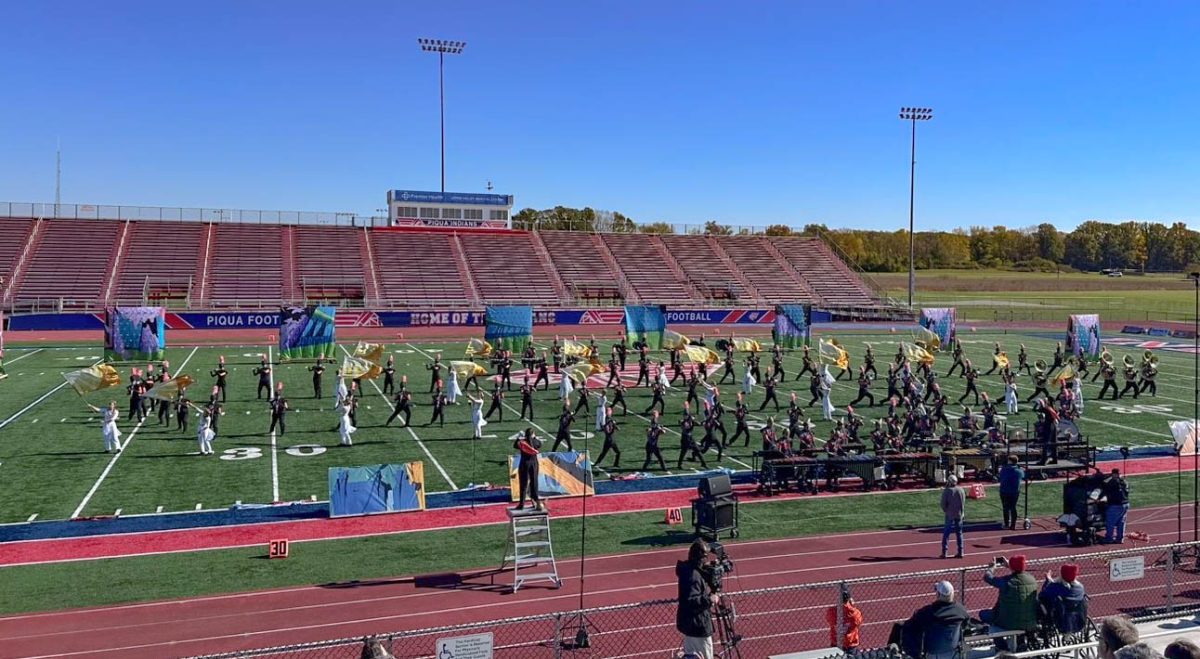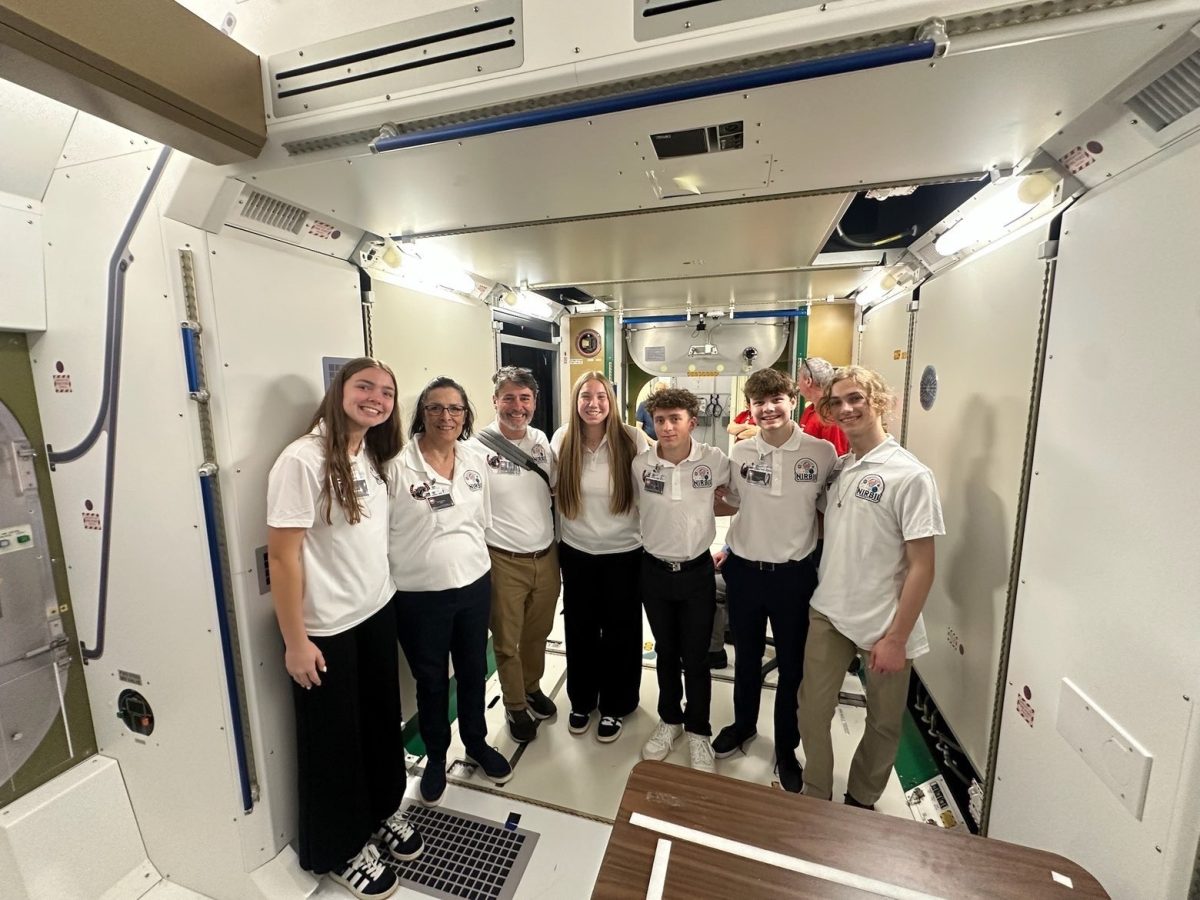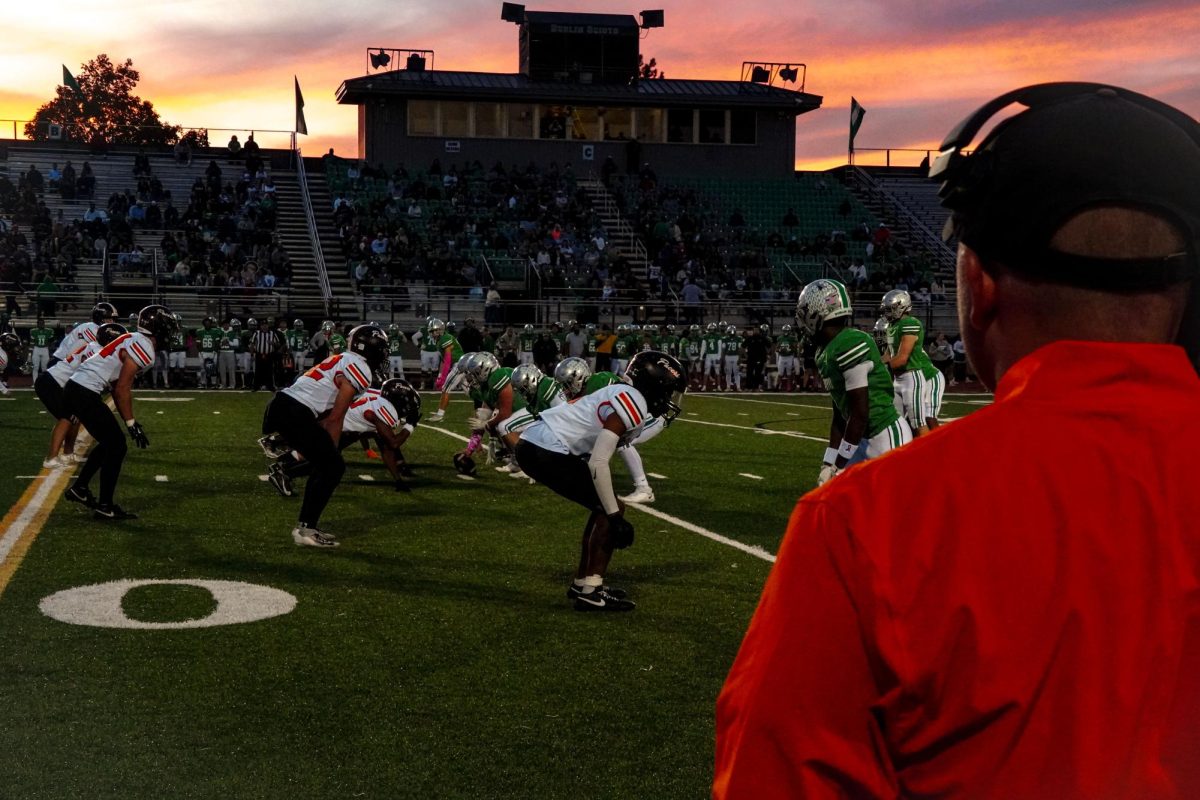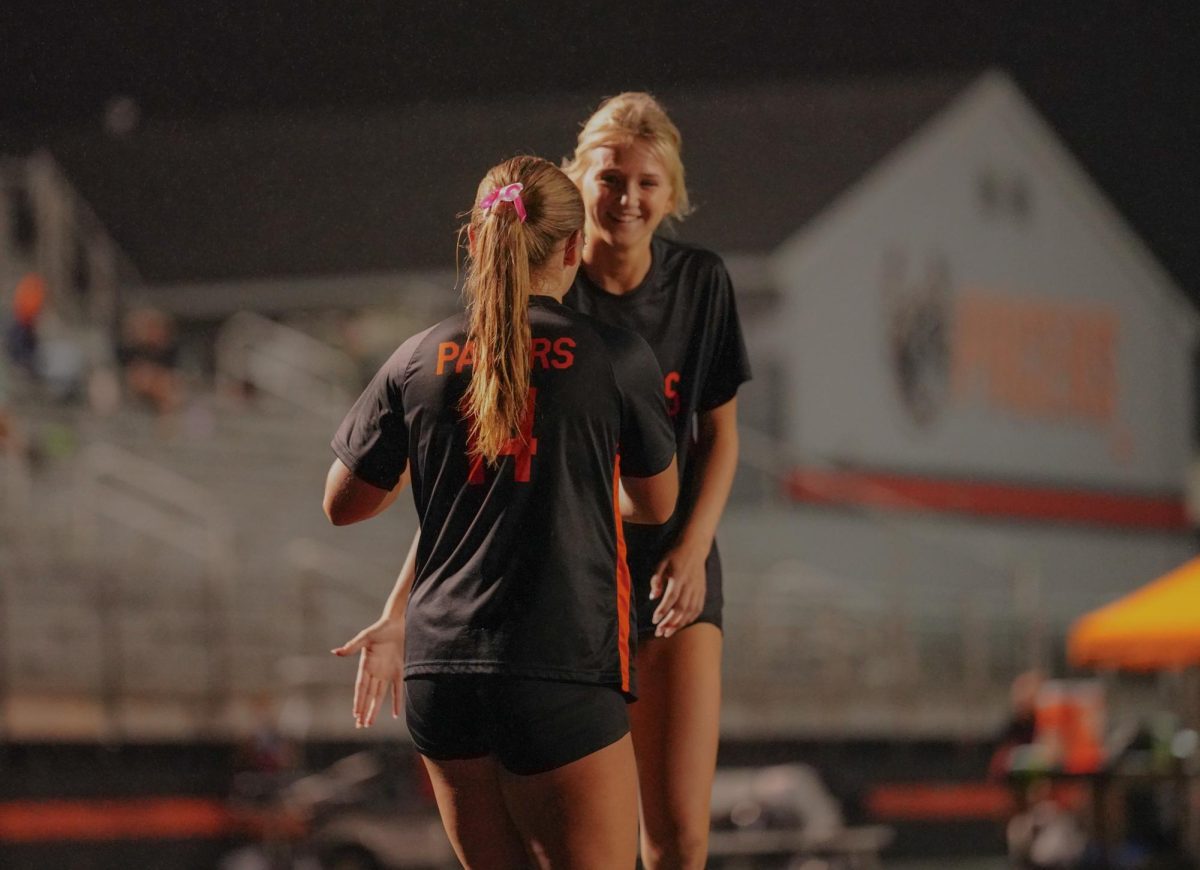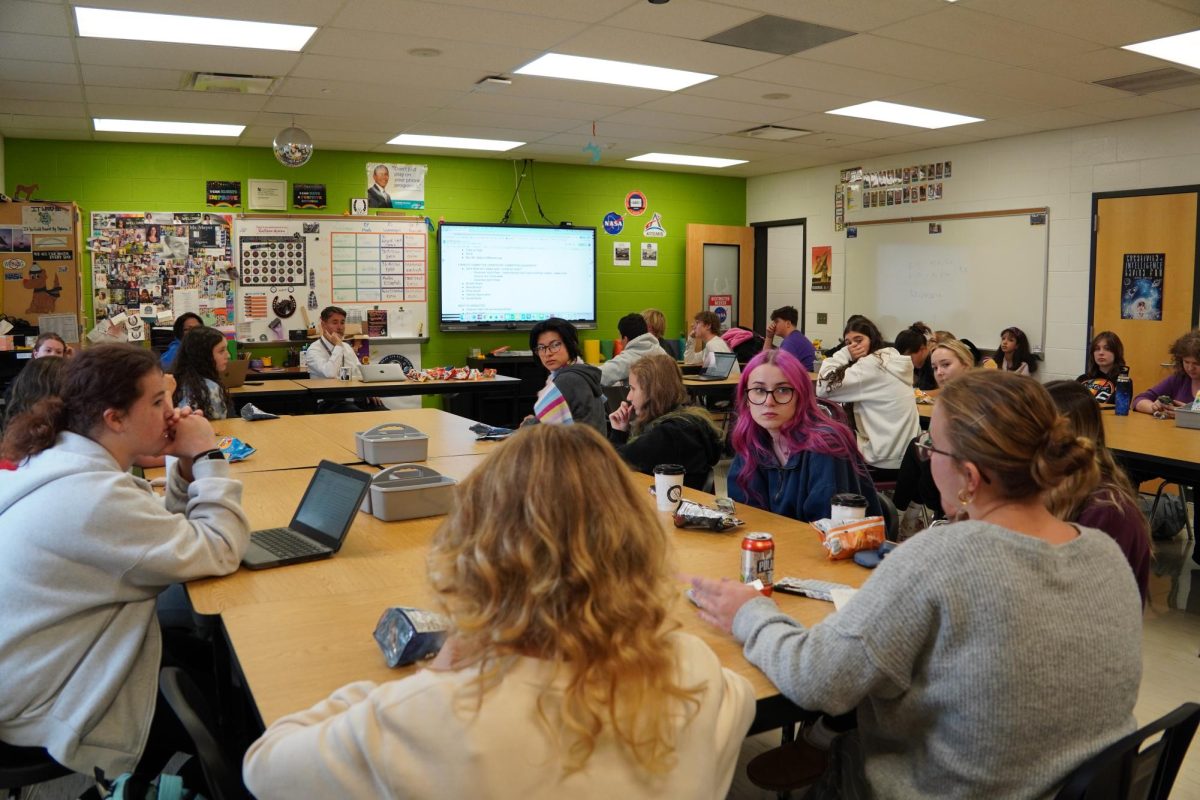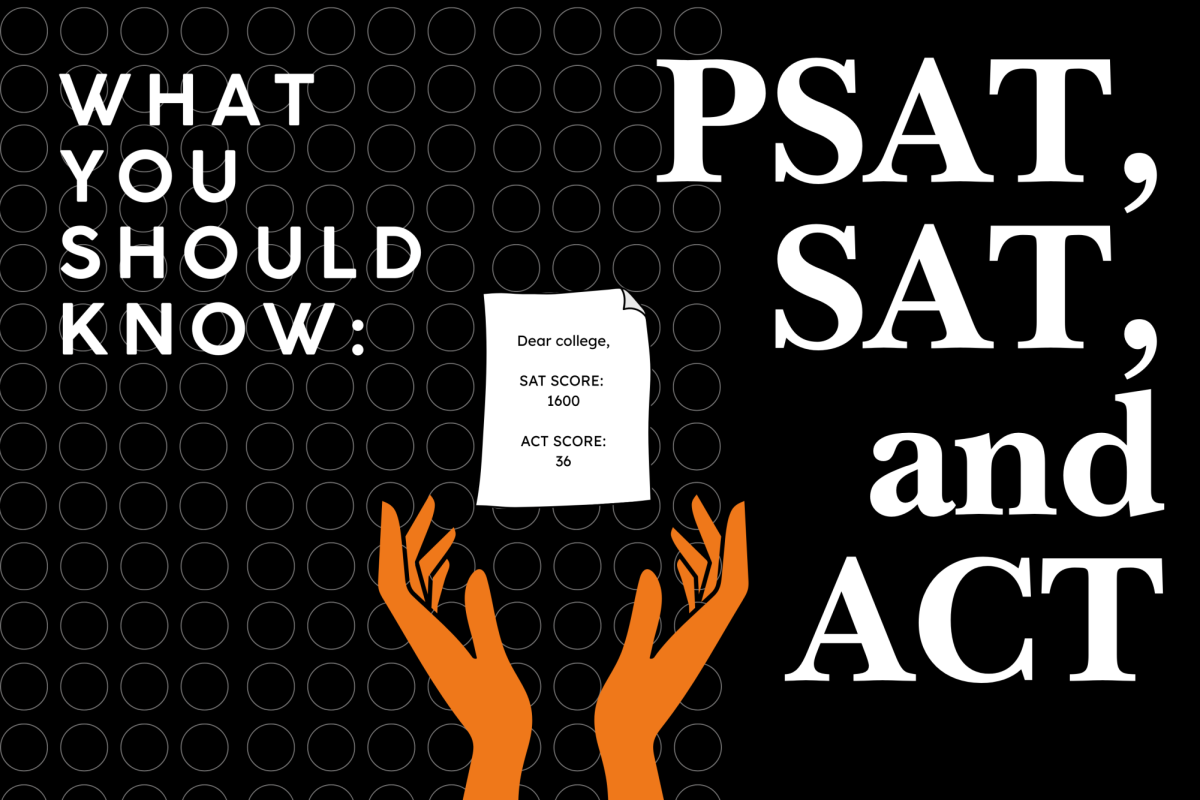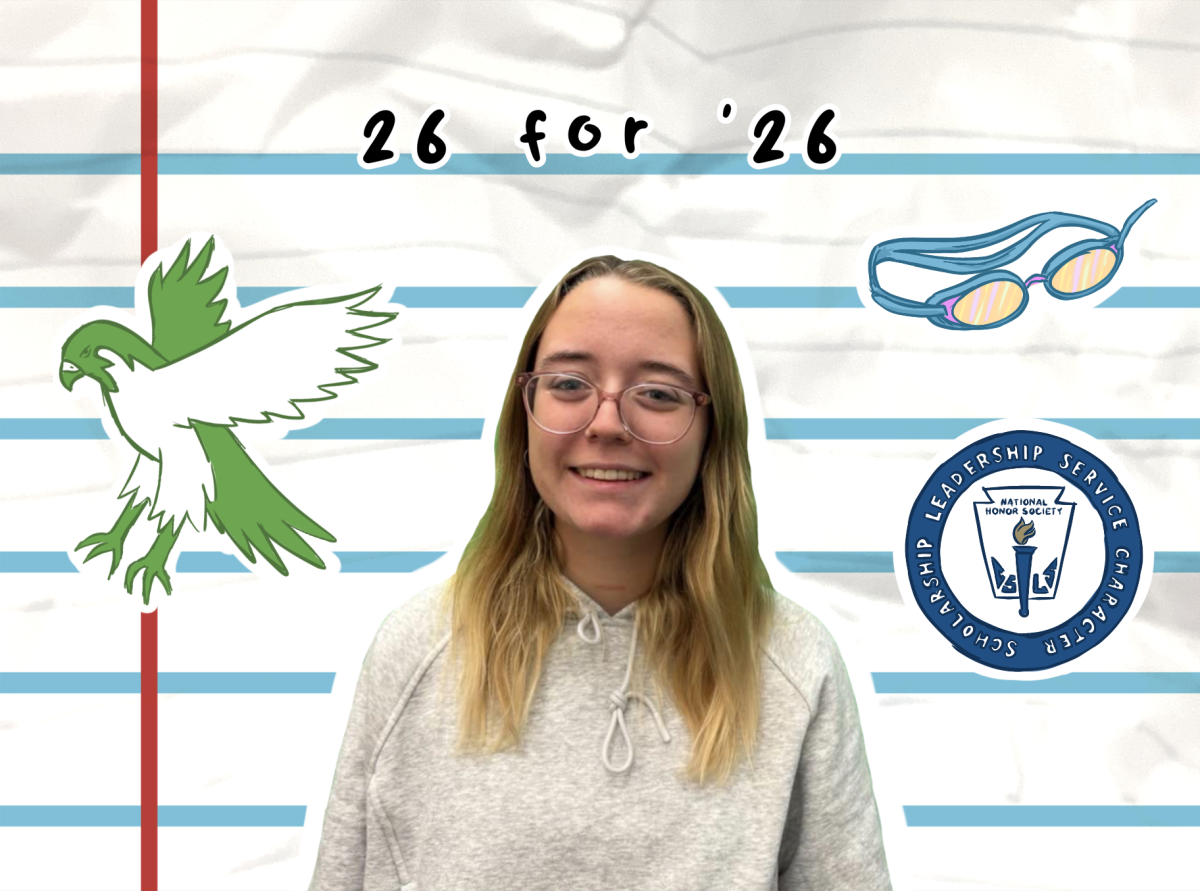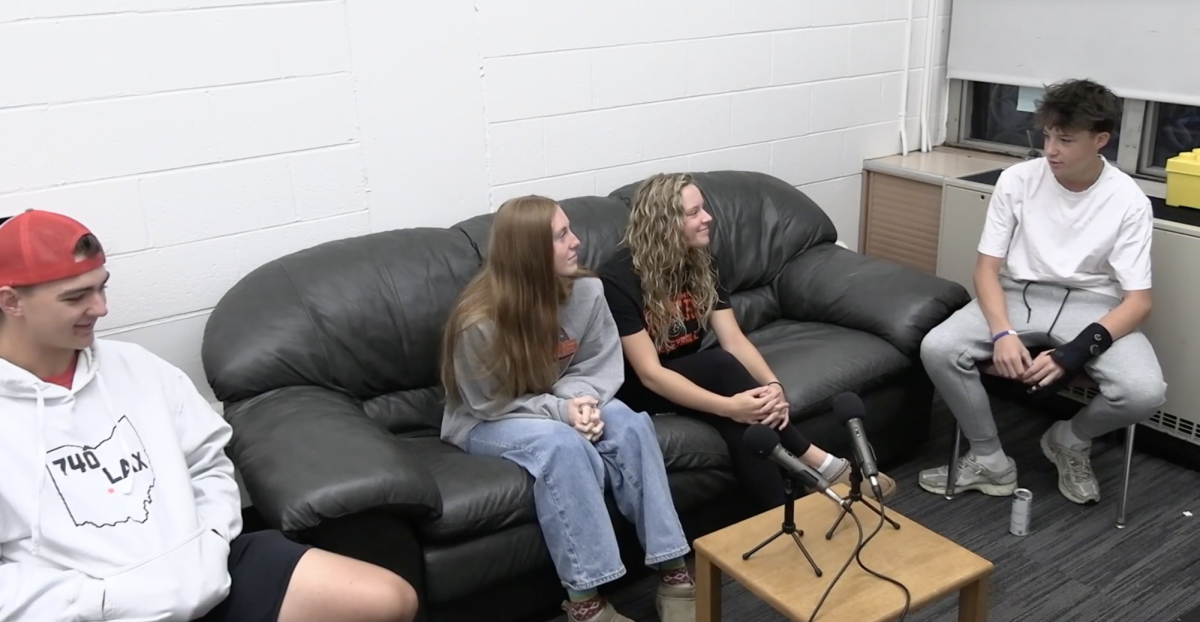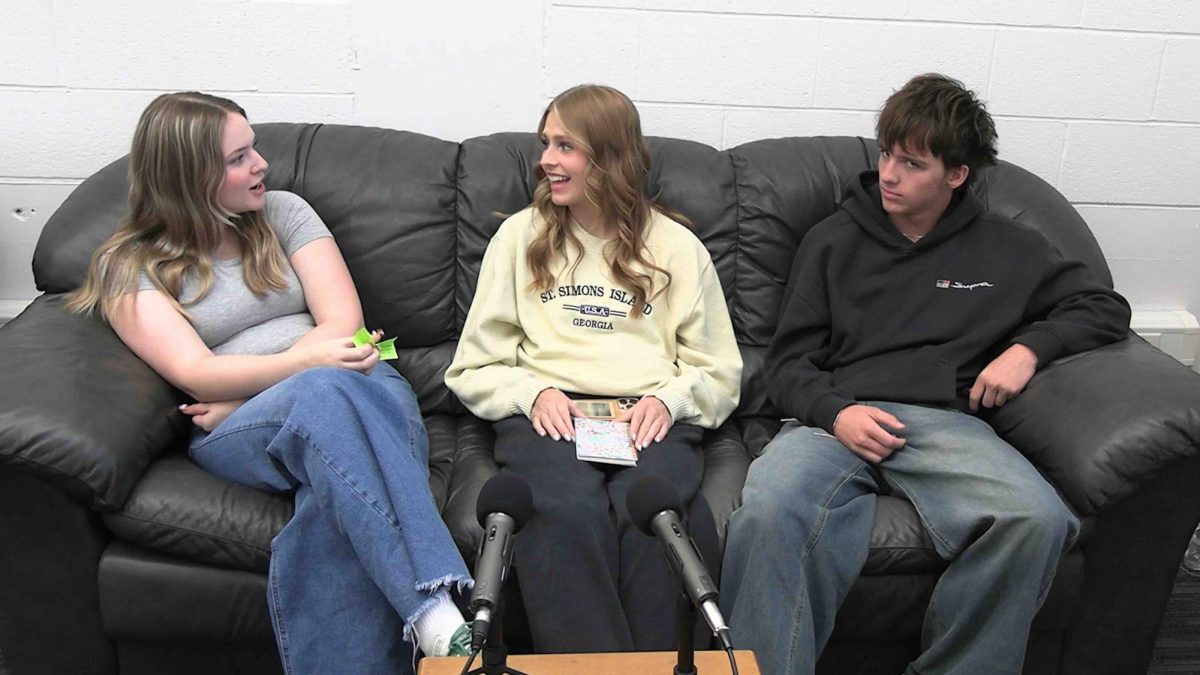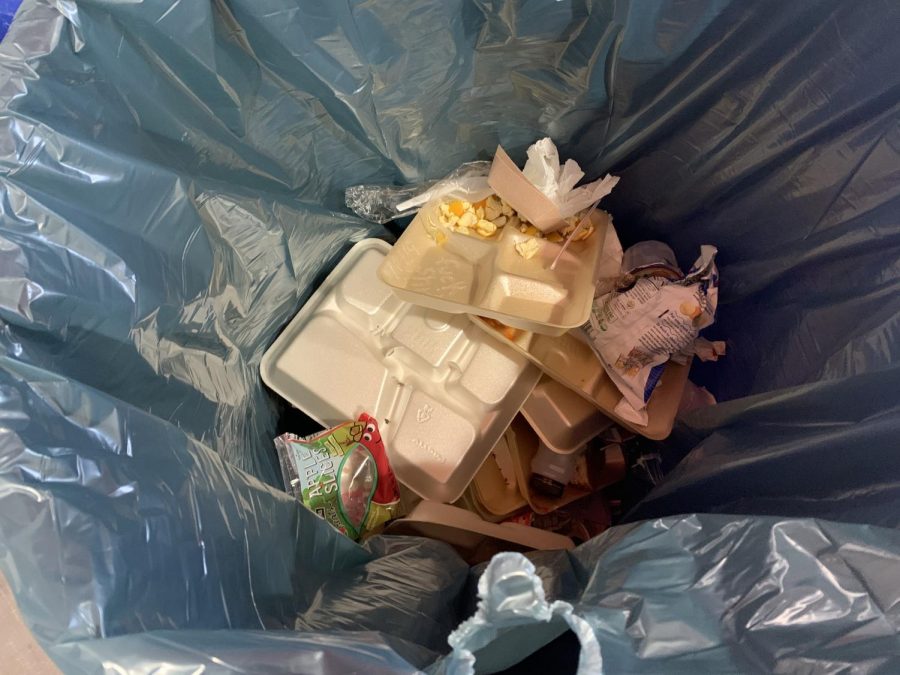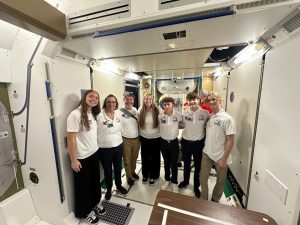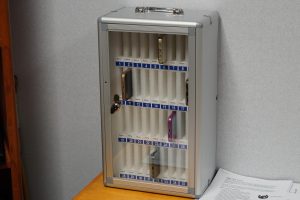Reusable lunch trays not cost efficient
After lunch, the trash can is filled with styrofoam lunch trays, plastic bags, and paper containers. Reusable lunch trays have been used in the past, which minimized the amount of trash.
November 7, 2019
While reusable products that help the environment become more popular, Hayes still uses disposable styrofoam lunch trays.
Director of Food Services for Delaware City Schools, Sally Rathje, explained disposable lunch trays are much more cost efficient.
“The disposable tray allows us to reduce labor and [medical and dental] benefits that we have to pay out of our food service budget,” Rathje said. “It also reduces equipment costs because there’s a lot of wear and tear on dish machines and all the equipment that’s needed.”
Sophomore Teagan Knutson brings up that there are ways to work around this issue.
Back when Hayes still used reusable lunch trays, their high labor and benefit costs were reduced through the work study program.
“They used to have a program for students to work at the school, during school,” Knutson said. “One of their jobs was to wash the reusable lunch trays.”
Although this does bring down labor costs, Rathje said that this was not a perfect solution. She believes that reusable lunch trays may work for elementary and middle school students, but are not suitable for a high school, which is something she noticed back when Hayes used reusable lunch trays.
“Nowadays kids do, in a high school level, go out for open lunch,” Rathje said. ”They go to the classroom [to eat]. They go to various places, and that’s why a lot of the reusable trays were found all over the high school.”
According to Rathje, it costs the district $8.16 to replace reusable trays, and trays were being lost on a daily basis.
Environmental science teacher Jeffery Bakunas suggests not using reusable or styrofoam trays, but he has different reasoning.
“I don’t like the styrofoam trays that they’re using now,” Bakunas said. “But sometimes when you have reusable lunch trays, you end up using a whole lot of water and energy just to wash them all.”
Bakunas offers an idea to solve the other environmental issues that reusable lunch trays bring.
“A better option would be moving to compostable lunch trays,” Bakunas said. “We have a compost pile at Hayes already.”
Bakunas suggests that the school could use Hayes’ already existing compost pile to accomplish this.
While Knutson could see the benefits to using compostable lunch trays made of materials such as cardboard, she also pointed out how they may not be efficient in completing their purpose to hold food well.
“That would be an easy fix,” Knutson said. “But, I don’t think that that would work super well because things like dressing on salads or anything that’s slightly liquid would just seep through and it would end up being more of a mess than styrofoam.”
In fact, Rathje says that that is why she decided to go with styrofoam lunch trays over cardboard.
“The problem is [that] they were very, very flimsy [and] they wouldn’t hold the heat correctly,” Rathje said. ”The quality was not there yet.”
She said that the district does other things to try to help the environment during lunch.
“We try very hard to keep our paper products down by putting things right onto the tray [rather than] into a cup,” Rathje said.
Additionally, the styrofoam trays are made of materials that are supposed to do little harm for the environment.
“The five compartment disposable tray is actually produced from environmentally renewable resources,” Rathje said.
She recognizes that being environmentally friendly is important, and says that the district is working towards that.
”We’re constantly looking for other products that are environmentally friendly that hold up to heat and cold and [have] the ability not to break when you’re holding it,” Rathje said.


